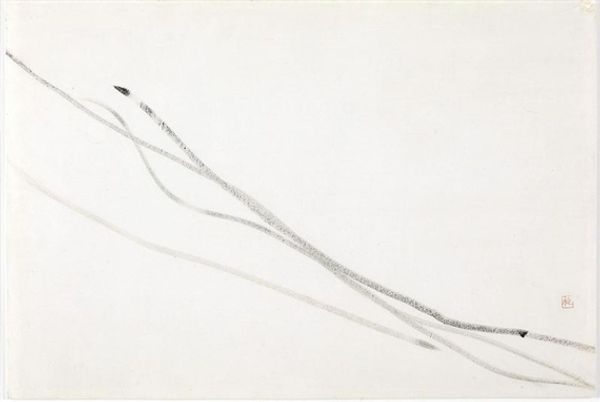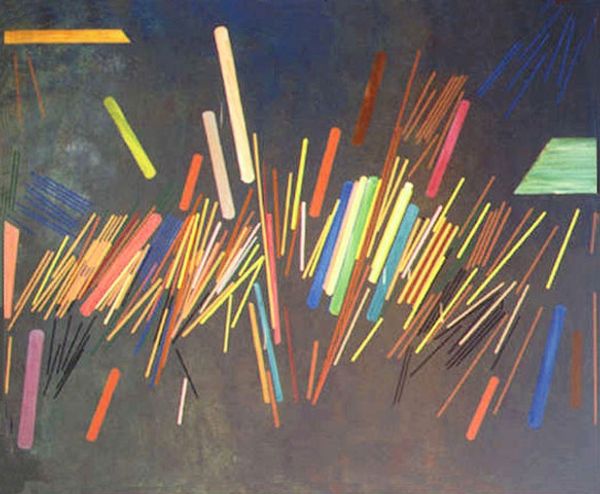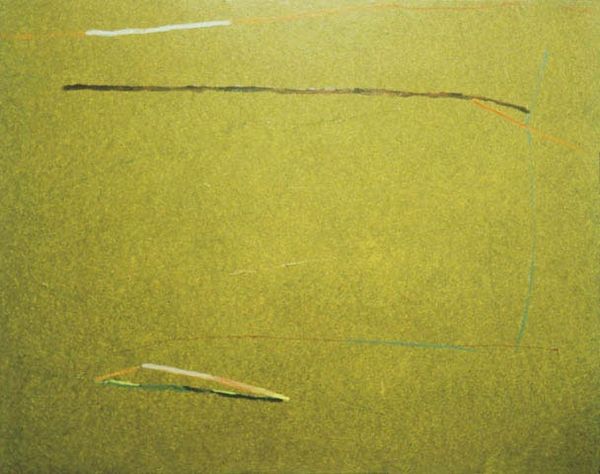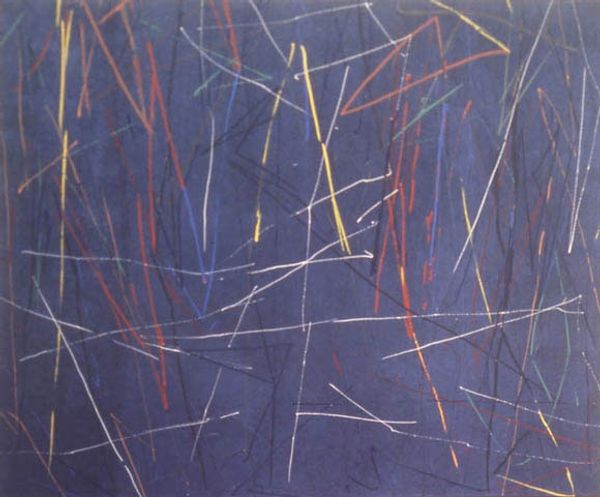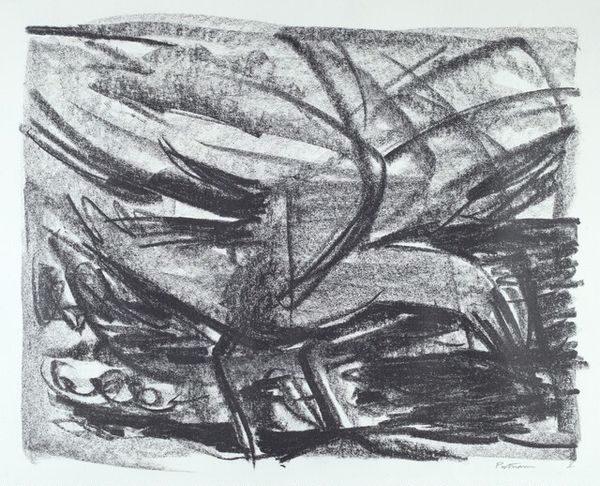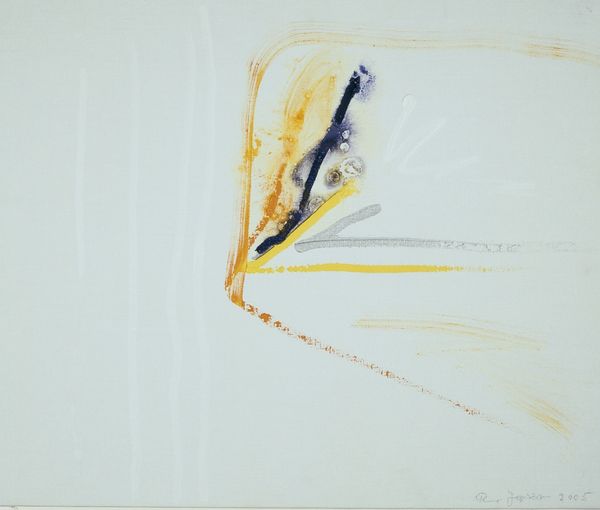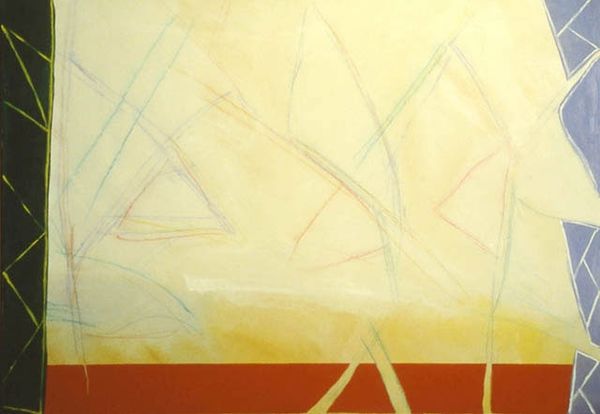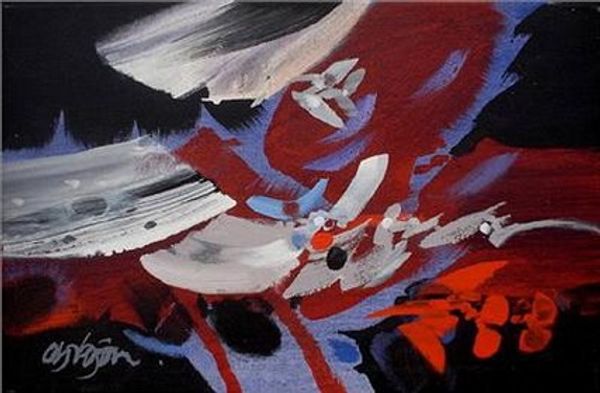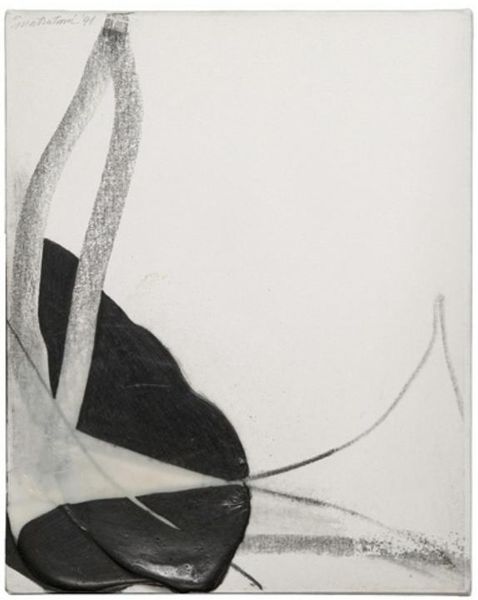
Copyright: Ronnie Landfield,Fair Use
Curator: Ronnie Landfield's "The Blue Whale" from 1973. He primarily worked with acrylic and pastel in this abstract-expressionist drawing. Editor: Initially, it strikes me as restless, despite the deep blue background. The stark, thin lines almost vibrate against that darkness. I’m intrigued by this dynamism achieved with such seemingly simple materials. Curator: It is dynamic. Notice how the enclosed shape implies a whale but dissolves at the edges. The suggestion, the symbol, becomes more powerful than a realistic depiction. Whales themselves, ancient and mysterious creatures, often represent a deep connection to the subconscious, to hidden knowledge. Editor: That boundary, delineated by the gold-ish line, looks both definite and provisional simultaneously, hinting at the contained subject as much as a sense of the material boundaries of this…paper or canvas? Do we know? I imagine it’s something rather coarse to have taken the acrylic pastel. Curator: It does hint at something barely contained. You can see elements of abstract expressionism echoed here. A sense of interiority expressed as expansiveness, like the unbounded sea suggested behind the abstracted whale form. Editor: Right, that sense of endlessness within a finite, manually defined area. I'm thinking about the tension of production here – the physical labor that made each individual chalk or pastel stroke, and then the choice of each hue laid down on this surface. Curator: Those color choices – the pale blues, reds, and stark white. I wonder about their symbolism, too. White is commonly associated with purity and spiritual connection; could it be that the whale represents something sacred? Editor: I keep circling back to those thin strokes. They’re clearly deliberate, but not overly polished, really focusing your gaze on process itself, a layering that allows the ground to be seen but builds an entire scene. Curator: Yes, this tension. Perhaps the incompleteness is intentional. The work implies a continuous process. Landfield provides visual language that invites us to imagine what the whale is, or what it might become. Editor: What it is and how it became so. It’s a drawing built from almost fugitive marks that add up to more than the sum of its parts. Fascinating piece, very gestural, yet very considered.
Comments
No comments
Be the first to comment and join the conversation on the ultimate creative platform.
